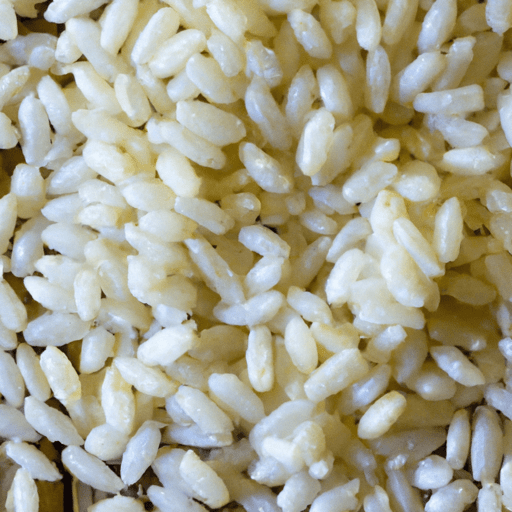The Versatile and Irresistible Rice for Risotto
Rice is a staple ingredient in kitchens around the world, and one particular type that shines in the culinary world is the rice used for risotto. With its creamy texture, delicate flavor, and ability to absorb flavors, rice for risotto is a versatile grain that elevates any dish it is used in. In this blog post, we will explore the taste, common uses, nutritional value, and fascinating history of this beloved rice variety.
Flavor Profile and Texture
When it comes to flavor, the rice used for risotto possesses a subtle, nutty taste that complements a multitude of ingredients. Its neutral flavor allows it to effortlessly absorb the flavors of the broth, vegetables, herbs, and cheese commonly used in risotto recipes. The starchy nature of the rice adds a creamy consistency to the dish, creating a melt-in-your-mouth experience with every bite.
Common Uses in Cooking
The primary use of rice for risotto is, of course, in the classic Italian dish - risotto. With its ability to absorb liquid while staying firm, this rice variety creates the perfect creamy base for countless risotto recipes. From comforting classics like mushroom risotto to more adventurous combinations like pumpkin and sage or saffron-infused seafood, the possibilities are endless.
Beyond risotto, this rice also makes a fantastic addition to other recipes requiring a creamy and smooth texture. It can be used in rice-based puddings, rice balls, and even rice-stuffed vegetables. Its versatility and ability to adapt to different flavors and ingredients make it a popular choice for creating comforting and satisfying meals.
Nutritional Value
Rice for risotto is not only a delight for your taste buds but also offers several nutritional benefits. It is a good source of carbohydrates, providing the energy your body needs to fuel daily activities. Additionally, it is low in fat and contains no cholesterol, making it a healthier alternative to certain grains and ingredients high in saturated fats.
Furthermore, this rice variety contains essential minerals such as iron, magnesium, and potassium. It also provides B-vitamins, which play a crucial role in maintaining a healthy metabolism. Incorporating rice for risotto into your meals can contribute to a well-balanced diet and provide a satisfying and wholesome dining experience.
History and Fun Facts
The history of rice for risotto takes us back to the lush green hills of northern Italy. The cultivation of rice in this region is believed to have started during the Middle Ages. The wetlands and abundant water supply in Lombardy provided the ideal conditions for rice cultivation, leading to the birth of risotto as a traditional Italian dish.
Traditionally, short-grain Arborio rice is the most popular choice for risotto. However, other rice varieties like Carnaroli or Vialone Nano are also used, each offering its own unique qualities and characteristics. These varieties, with their ability to release starch and create that creamy texture, have become synonymous with the rich and indulgent nature of risotto.
Rice for risotto is an essential ingredient that adds a touch of sophistication and elegance to any dish. Its smooth and creamy texture, delicate flavor, and ability to absorb flavors make it a go-to option for creating indulgent risotto recipes. Whether you’re a seasoned cook or an adventurous home chef, exploring the world of rice for risotto opens up a world of culinary possibilities. So grab your favorite ingredients, a wooden spoon, and embrace the joy of cooking with this delightful rice variety!
Rice for Risotto
Origin and types: Rice for risotto is typically made using short-grain rice, such as Arborio, Carnaroli, or Vialone Nano. These varieties originated in Italy and are specifically cultivated to provide a creamy texture when cooked.
Common uses: Rice for risotto is a key ingredient in Italian cuisine and is used primarily to make the popular dish risotto. It is traditionally cooked slowly in broth until it reaches a creamy consistency with a slightly al dente texture.
Nutritional benefits: Rice for risotto is a good source of carbohydrates and provides energy. It is low in fat and sodium and contains small amounts of protein and fiber. Specific nutrient content may vary depending on the variety used.
Unique properties: The short-grain rice used for risotto has higher starch content compared to other types of rice. This characteristic, along with its plump grains, allows the rice to absorb liquid during cooking, resulting in a creamy texture. Rice for risotto has a slightly chewy consistency, making it distinct from long-grain rice varieties.
Historical significance: Rice has been cultivated in Italy since the 15th century, primarily in the northern regions of Lombardy and Piedmont. The method of cooking rice slowly in broth to create risotto evolved during the Renaissance, and the dish has since become a staple in Italian cuisine. Over time, regional variations of risotto with different ingredients have emerged, showcasing the versatility of rice for this dish.
Note: While risotto is traditionally made with rice, other grains or ingredients can be used to create similar dishes with unique flavors and textures.




Use the share button below if you liked it.
It makes me smile, when I see it.